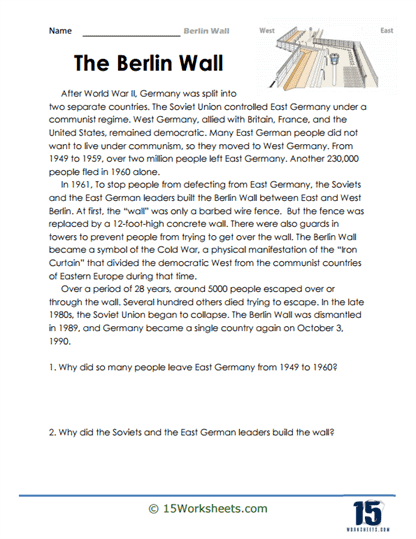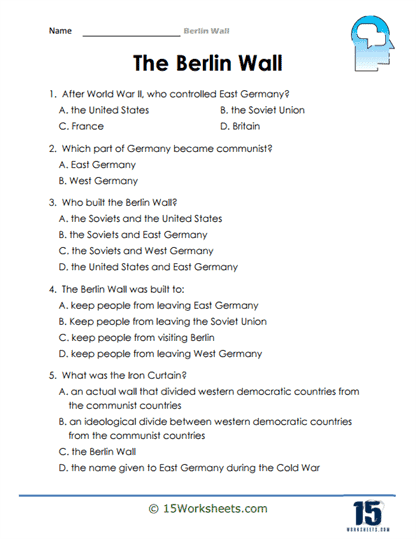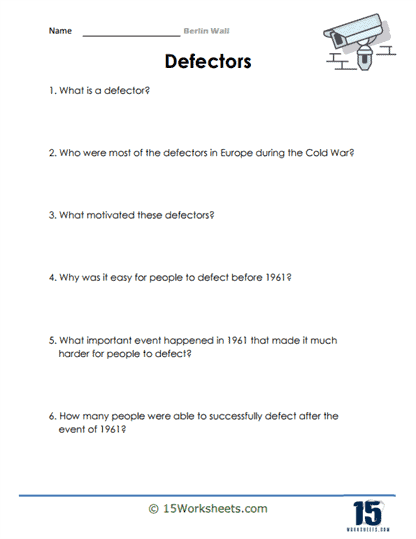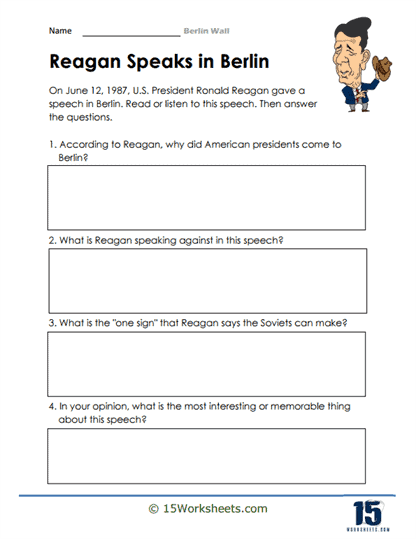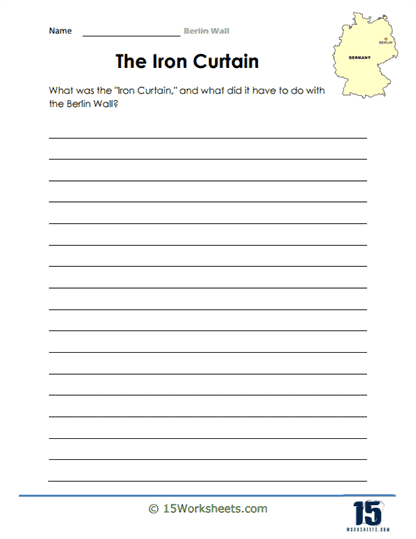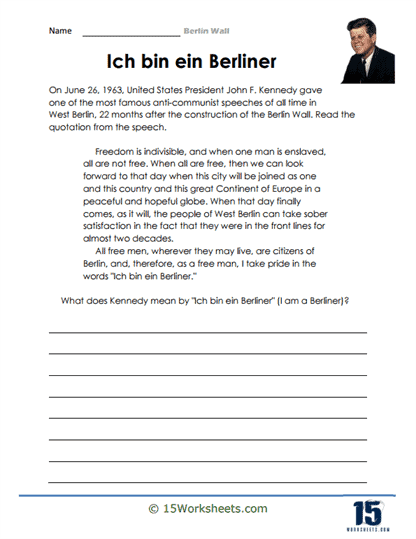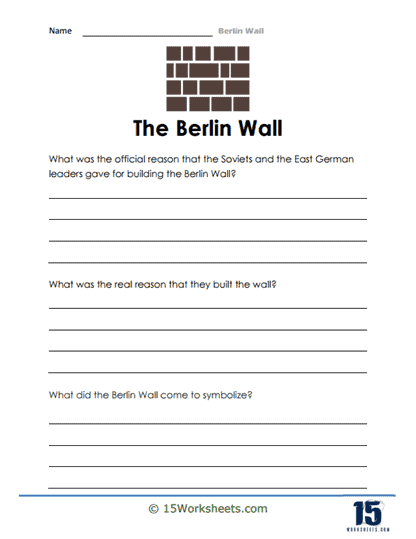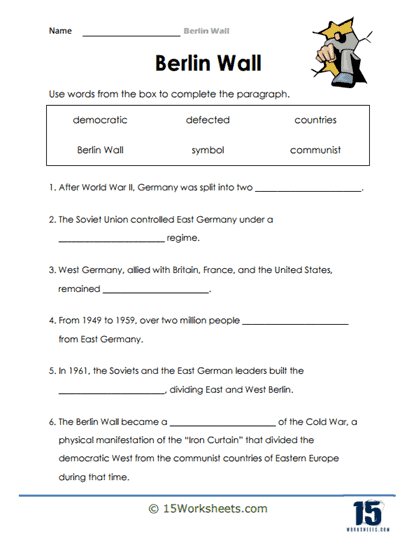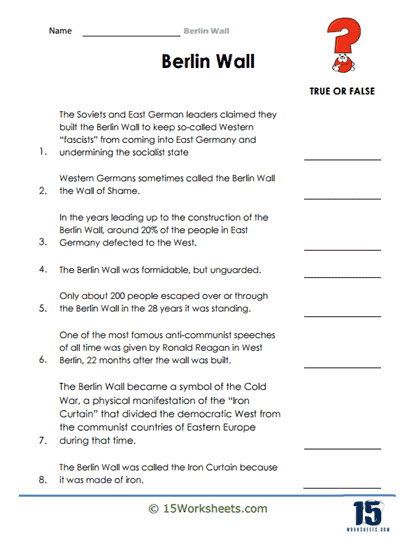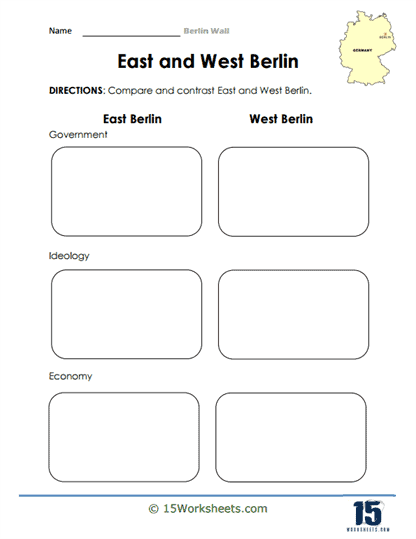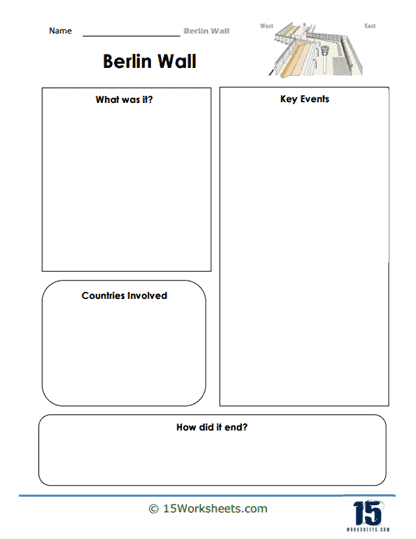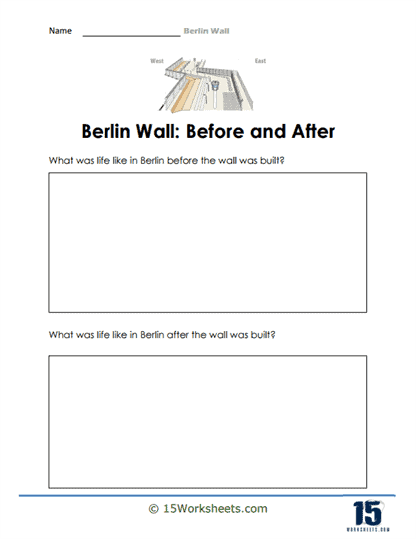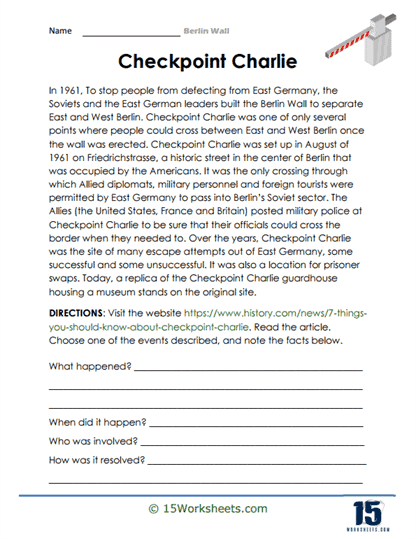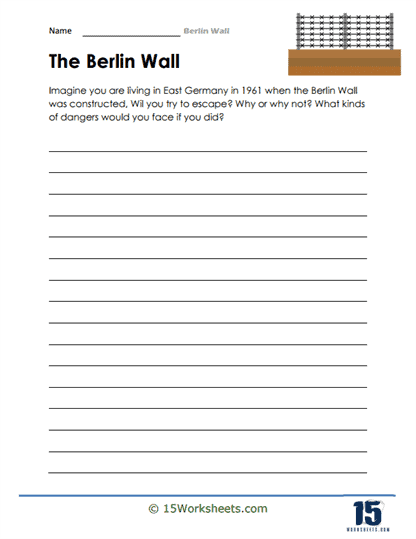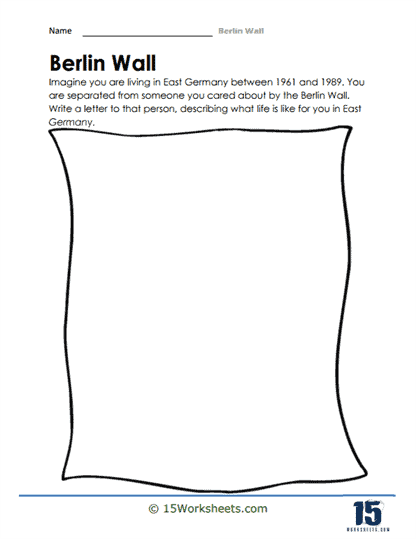Berlin Wall Worksheets
All About These 15 Worksheets
Students learn all about one of the most iconic symbols of the Cold War era, the Berlin Wall, with this comprehensive series of 15 worksheets. This collection is designed to immerse students in the history, significance, and impact of the Berlin Wall, exploring the political, social, and human aspects of this divided city. Through a wide range of activities and thought-provoking exercises, students will gain a deeper understanding of the events that led to the construction of the wall, its effects on the people of Berlin, and its eventual fall. Through these worksheets, students will:
- Explore the historical context, key events, and significance of the wall, gaining a comprehensive overview of this period in history through a thorough reading of different passages;
- Demonstrate a deep understanding of the various aspects of this period in history through writing prompts, multiple choice questions, fill in the blanks activity, and true or false questions;
- Synthesize all that they’ve learned by creating an infographic that showcases key facts and events;
- Effectively compare and contrast East and West Berlin in terms of their government, ideology, and economy;
- Reflect on the key events and express their own thoughts by putting themselves in the shoes of those who witnessed the construction of Berlin Wall;
- Explore the experiences of individuals living on both sides of the Berlin Wall;
- And investigate the speeches made by notable figures which are relevant at the time of the historic division and long after.
Engaging with this series of Berlin Wall worksheets will transport students to the events of the Berlin Wall, fostering a deep understanding of its historical significance, the human stories involved, and its enduring impact on global politics and society. Through various activities and exercises, students will develop empathy, critical thinking skills, and a greater appreciation for the importance of freedom, unity, and human rights.
What was the Berlin Wall?
The Berlin Wall was a physical barrier constructed by the German Democratic Republic (East Germany) to separate East Berlin from West Berlin between 1961 and 1989. The wall was a prominent symbol of the Cold War and the division between the Eastern Bloc, under the influence of the Soviet Union, and the Western Bloc, led by the United States and its allies. The Berlin Wall’s significance in history is multifaceted, and its impact can be seen in the realms of politics, culture, and human rights.
After World War II, Germany was divided into four occupation zones controlled by the United States, the United Kingdom, France, and the Soviet Union. In 1949, Germany was formally split into two separate countries: the Federal Republic of Germany (West Germany), which was democratic and aligned with the Western Bloc, and the German Democratic Republic (East Germany), a socialist state under Soviet influence. Berlin, the German capital, was also divided into East and West, despite being entirely within the territory of East Germany.
The Berlin Wall was built in response to the mass emigration of East Germans to West Germany, which was seen as an embarrassment for the East German regime and a challenge to its stability. The wall was intended to prevent East Germans from escaping to the West, as well as to symbolize the ideological divide between communism and capitalism.
The Berlin Wall was significant in history for several reasons:
- Symbol of the Cold War – The Berlin Wall was a potent symbol of the political, economic, and ideological divisions between the East and West during the Cold War. It represented the physical manifestation of the Iron Curtain, a term coined by British Prime Minister Winston Churchill to describe the separation of Eastern and Western Europe.
- Human rights and the plight of divided families – The wall was a stark reminder of the human rights abuses and restrictions on personal freedom imposed by the East German regime. Many families were separated as a result of the wall’s construction, and attempts to cross the wall often ended in tragedy, with over a hundred people killed while trying to escape to the West.
- Catalyst for change – The wall’s existence fueled resentment among East Germans and contributed to growing unrest, culminating in mass protests in 1989. The fall of the Berlin Wall on November 9, 1989, marked a turning point in the Cold War and paved the way for German reunification in 1990, as well as the collapse of communist regimes across Eastern Europe and the eventual dissolution of the Soviet Union.
In summary, the Berlin Wall was a significant historical landmark that symbolized the ideological divide of the Cold War, exemplified the human rights abuses under the East German regime, and served as a catalyst for change leading to the end of the Cold War and the reunification of Germany.

